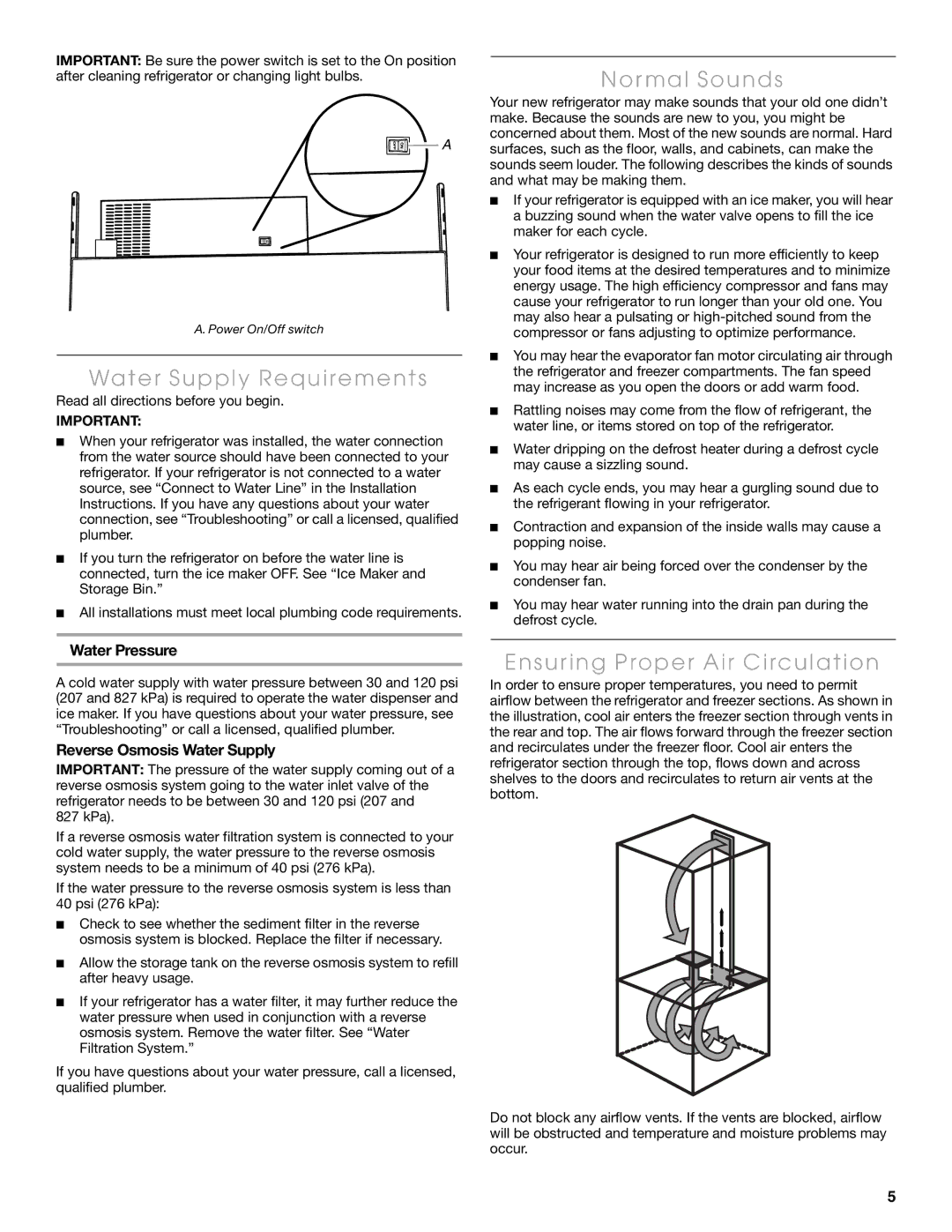KBULT3665E, KBULT3655E, KBURT3655E, KBURT3665E, KBULT3675E specifications
The Thermador KBURT3675E, KBULT3675E, KBURT3665E, KBURT3655E, and KBULT3655E are a series of high-performance under counter refrigerators designed for the modern kitchen. These models embody Thermador's commitment to innovation, combining advanced technology with elegant design to meet the needs of discerning home chefs.One of the standout features of these models is their state-of-the-art cooling technology. Thermador incorporates powerful compressors and dynamic cooling systems that ensure consistent temperatures and humidity levels. This technology helps preserve the freshness and flavor of your food while preventing spoilage. Each refrigerator is equipped with multiple cooling zones, allowing you to store various food items at optimal conditions.
The sleek stainless steel exterior and customizable panel options provide a luxurious aesthetic that fits seamlessly into any kitchen decor. The interior is equally impressive, boasting adjustable glass shelves that maximize storage flexibility and make organizing items a breeze. The LED lighting illuminates the interior, making it easy to see and access items even in low light.
Another notable characteristic of the KBURT and KBULT series is their energy efficiency. Designed with eco-friendly components, these refrigerators not only reduce energy consumption but also provide significant cost savings over time. Additionally, they operate quietly, ensuring a peaceful kitchen environment.
The convenience features of these models include an intuitive control panel, offering easy access to temperature settings and other functions. Some models also come with a built-in ice maker, providing a reliable supply of ice for beverages and entertaining. The soft-close drawers and doors add to the premium feel, ensuring smooth and silent operation.
Moreover, Thermador emphasizes connectivity with certain models featuring Wi-Fi capabilities. This allows you to monitor and control your refrigerator remotely through a smartphone app, making it easier to manage food storage efficiently.
In summary, the Thermador KBURT3675E, KBULT3675E, KBURT3665E, KBURT3655E, and KBULT3655E offer a perfect blend of advanced cooling technologies, luxurious design, and user-friendly features. This series is an ideal choice for those looking to elevate their kitchen experience with reliable and stylish refrigeration solutions. With their commitment to quality, Thermador continues to set the standard for high-end kitchen appliances.

